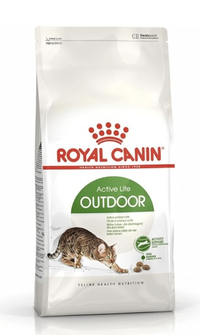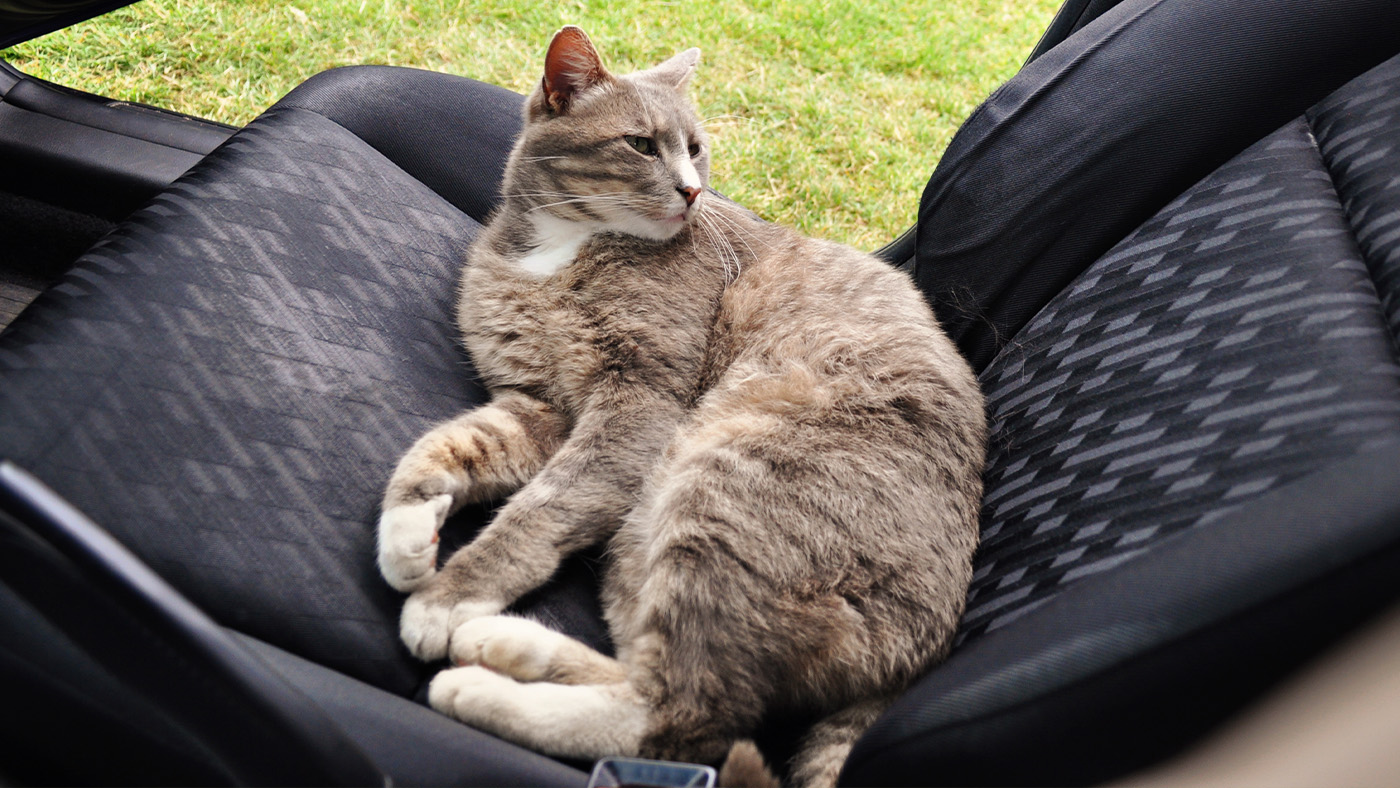I changed my cat’s food and her fur fell out. Here’s what a vet had to say
I was positive that Roxy's hair loss was the result of a change in diet, but what I found out really surprised me.
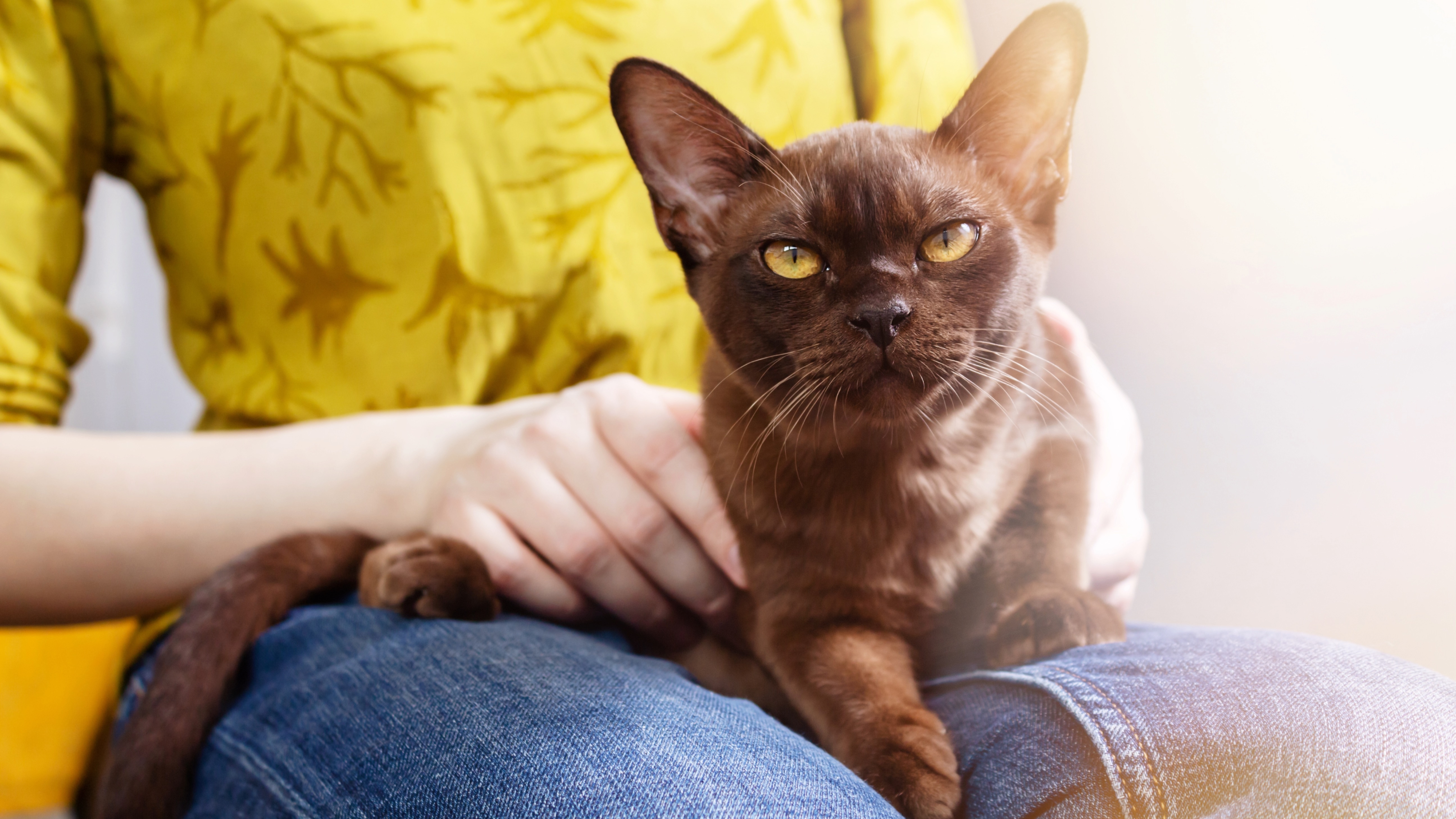
I'm not going to lie — our four-year-old Burmese/British Shorthair cross, Roxy, is very much the center of our family. And boy oh boy does she know it! Spirited, affectionate, chatty and full of mischief she is definitely spoiled rotten, which is why I was so surprised when one day her fur started rather mysteriously falling out.
Fed a diet of the best cat food, Roxy had been gobbling up Royal Canin kibble since the day she was old enough to chew but all of a sudden her behavior changed. Instead of diving head first into her food bowl each morning with an appetite that would put Garfield to shame, she'd listlessly chew on a few biscuits before wandering off.
Thankfully, our cat not eating wasn't caused by any underlying health issue, which got me wondering if perhaps she was just bored with her food. Certain that was the case, I decided to mix things up a bit and change her diet. And that's when things quite literally started to fall apart.
We may have ordered a Burmese/British Shorthair cross, but as she got balder and balder by the day, I began to wonder if Roxy might actually be a Sphynx in furry clothing. So I turned to expert vet Dr. Rebecca MacMillan to see if changing Roxy's food could be behind her hair loss or whether our beloved feline was, in fact, an imposter. And what she had to say really surprised me...
Can changing cat food cause hair loss?
After several years of dining on the best dry cat food from Royal Canin, I decided to swap Roxy over to a kibble in the Wellness Core range. I'd always been a fan of research-backed Royal Canin but I was equally impressed when I scanned the ingredient list on the back of the Wellness Core kibble and decided to give it a go.
Opening the bag at 6am the next morning, I have to admit I felt a bit queasy as I was hit by an overwhelming smell of fish — but then that's what you get when you choose a product with real salmon as the first ingredient and dehydrated herring and tuna following not to far behind!
That was soon forgotten though when Roxy attacked her food bowl with the sort of enthusiastic gusto she was known for. Breathing a sigh of relief, it appeared a change in food was just what the doctor ordered. That is, until two months later when I noticed her sporting a serious bald patch in the fold of one of her back legs. Not long after that, a less severe patch appeared in the fold of one of her front legs.
PetsRadar Newsletter
Get the best advice, tips and top tech for your beloved Pets
Could changing cat food be to blame?
"In my experience, it is not typical for a cat to lose hair when there has been a change in diet," says Dr. MacMillan. The only time that this might happen is if the cat has an underlying food allergy. Moving to a diet that contains a trigger for that cat could possibly cause issues like increased scratching or overgrooming, resulting in hair loss.
Food allergies are not as common in cats as flea allergies or environmental allergies, however (grass pollens, house dust mites etc). A strict dietary trial under veterinary supervision would be required to confirm if a dietary allergy is present."
After hearing this, I was puzzled — if switching Roxy's diet wasn't to blame for her newfound nakedness, what was?
Wellness Core Sterilised Ocean Dry Cat Food Salmon Recipe 4kg bag
£28.49 from Amazon
Packed with quality ingredients, this nutritious kibble is grain-free, easy to digest and great for keeping hairballs under control.
Why is my cat losing so much fur?
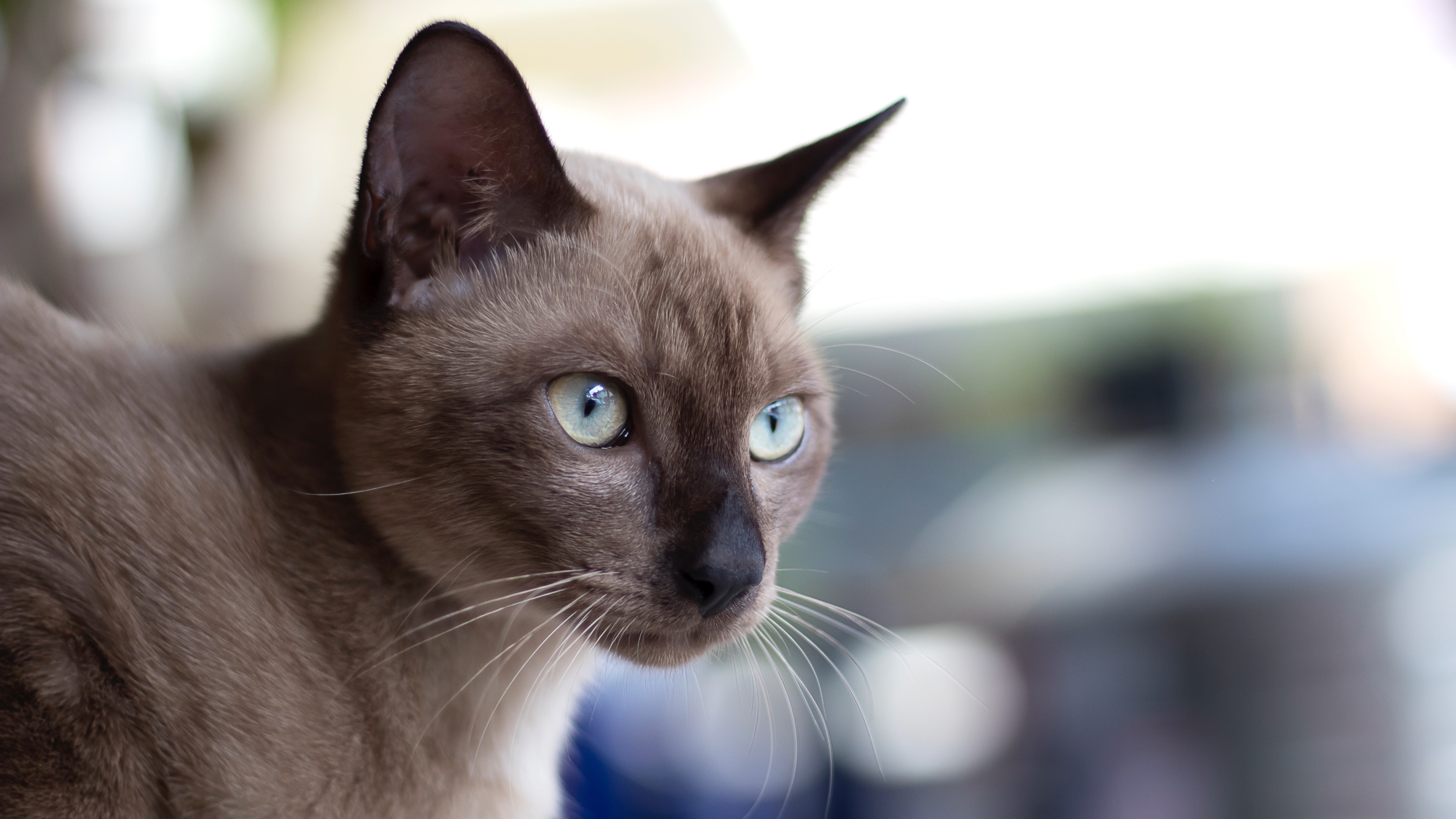
Concerned there might be something wrong with Roxy, I asked Dr. MacMillan to share her thoughts on what might be causing her to shed fur.
"In many cases, fur loss is due to overgrooming. Cats may overgroom if they are feeling itchy from underlying skin allergies or parasites. Skin inflammation and secondary skin infections are common in both scenarios," she told me.
"There are also a variety of health complaints that can cause cats to overgroom. Pain from arthritis could cause a cat to lick at their legs and joints, or cystitis may cause a cat to groom their abdomen and genitals.
“Hair loss can sometimes be seen for other reasons such as hormonal conditions, cancer or following on from other illnesses."
What happens if you change a cat’s food too quickly?
Given that we're vigilant in treating Roxy with the best flea treatments for cats, I felt confident ruling out fleas and parasites as the cause of her fur loss. Allergies also felt unlikely since Roxy seems to have an iron stomach that will allow her to eat anything and everything she can get her paws on.
I have to admit that while I may be a so-called 'pet expert', I made a big mistake when it came to switching Roxy from one diet to another — I didn't transition her properly. I was so worried about her being off her food that I ordered a new kibble of her to try without slowly phasing out the old one.
So I asked Dr. MacMillan to share her thoughts on whether my haste was behind Roxy's hair loss.
"Changing a cat's diet too quickly is most likely to result in stomach upsets," she told me. "This may include vomiting, loose stools and an increase in gas. A gradual introduction to any new diet is important to allow the cat’s microbiome (gut flora) to adapt to the new product. Also, some cats may struggle with the palatability of a new food, so it is usually best to mix some of the new diet in with some of the old, gradually changing the ratio over time."
Roxy's only sign from the change in diet was a loss of fur in two particular areas, so having ruled out all of the likely candidates I turned to something I hadn't considered before — was our feline friend feeling stressed out?
Royal Canin Active Life Outdoor Dry Cat Food 4kg bag
£37.68 from Amazon
This kibble has been designed to meet the nutritional needs of active cats who spend a lot of time outdoors. Great for maintaining joint health and high energy levels.
Anxiety in cats
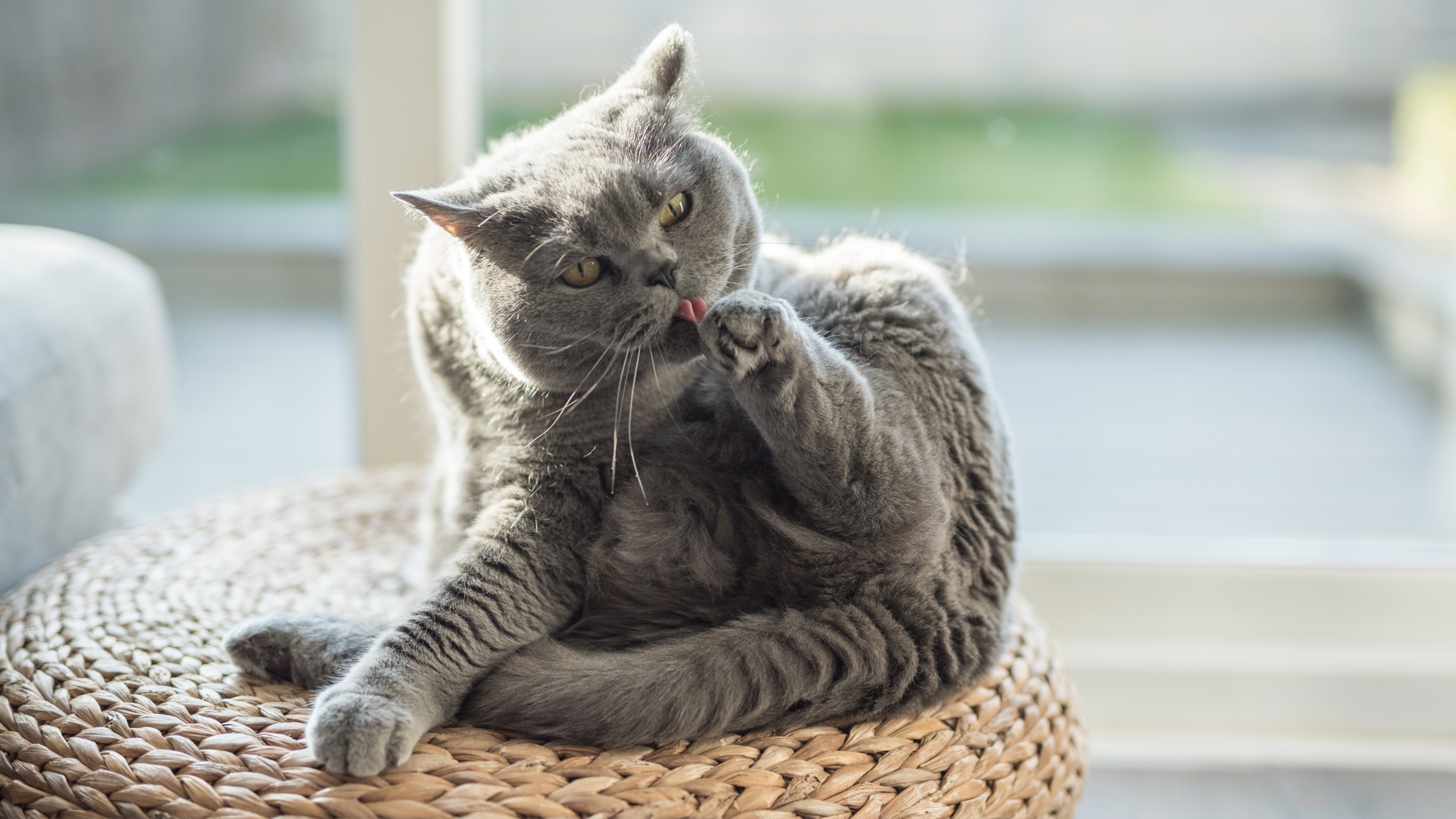
While we often think of things like stress and anxiety as being states that affect just us humans, anxiety in cats is more common than you might think.
"Cats frequently overgroom for behavioral reasons, such as stress and anxiety. Triggers for this could include a house move, new pets or family members, or building work," says Dr. MacMillan.
I started to wonder if the change in diet and Roxy's hair loss weren't actually related at all. Could stress be causing her to overgroom? Although the answer to 'why is my cat overgrooming?' can be complex, vet's agree that stress is one of the leading causes.
"Excessive grooming is usually caused by stress and this is a very common cause of hair loss in cats. When a cat has become stressed, anxious, fearful, or worried, they might groom themselves to feel better and safer as it releases happy endorphins," explains vet nurse Annalisa Morgan.
I started to look back over the past six months and I realised that Roxy's routine hadn't been as stable and calm as it usually was. My mother-in-law was terminally ill, which meant my husband and I were away a lot at the weekends. On one long, two-week trip, we had no choice but to take her with us but, scared she might run away, we kept her indoors the whole time. Given Roxy can normally come and go as she pleases, this was not a trip she enjoyed.
Things have slowly got back to normal in the last three months and as Roxy's predictable routine has returned, so too has her fur — but the whole experience has taught us a two very valuable lessons.
Firstly, separation anxiety in cats is a very real issue, especially for people-oriented breeds like Roxy's. While she may have appeared fine with our absence to begin with, it's clear that the days when we weren't around were stressful for her.
Secondly, although she was with us for our longest stint away from home and is a brilliant car traveler, not being able to get outside was also very anxiety-inducing for her. As a cat that has a high need for stimulation and enrichment, being stuck in a house where people were very occupied with navigating their grief was a lot harder on her than we initially realized.
How to switch a cat to new food
Even though Roxy's new diet wasn't the cause of her fur falling out, changing cat's food quickly like I did is not recommended and can result in issues such as vomiting and loose stools. To avoid this, Dr. MacMillan advises introducing a new diet gradually as this will increase the chances of your cat accepting it and reduce the likelihood of stomach upsets.
"Start by mixing approximately 25% new food to 75% old food for the first couple of days, then go to 50% new to 50% old for a couple of days, followed by 75% new to 25% old food. If your cat tolerates this ratio well then you can go to 100% new food after a couple of days.
This regime should be fine for the majority of cats. However, some may require an even more gradual introduction. If your cat develops problems at any point, go back a step or two and give them a little longer.
If you are unsure about your cat’s diet at any point, then speak to your vet for advice or call the pet food manufacturer for support."
Looking for more great health and wellbeing content? We've got you covered in our vet's guide to how long can cats go without food? Plus, win some serious brownie points with your feline friend with these 32 ways to be the best cat owner and our favorite ways to bond with your cat.
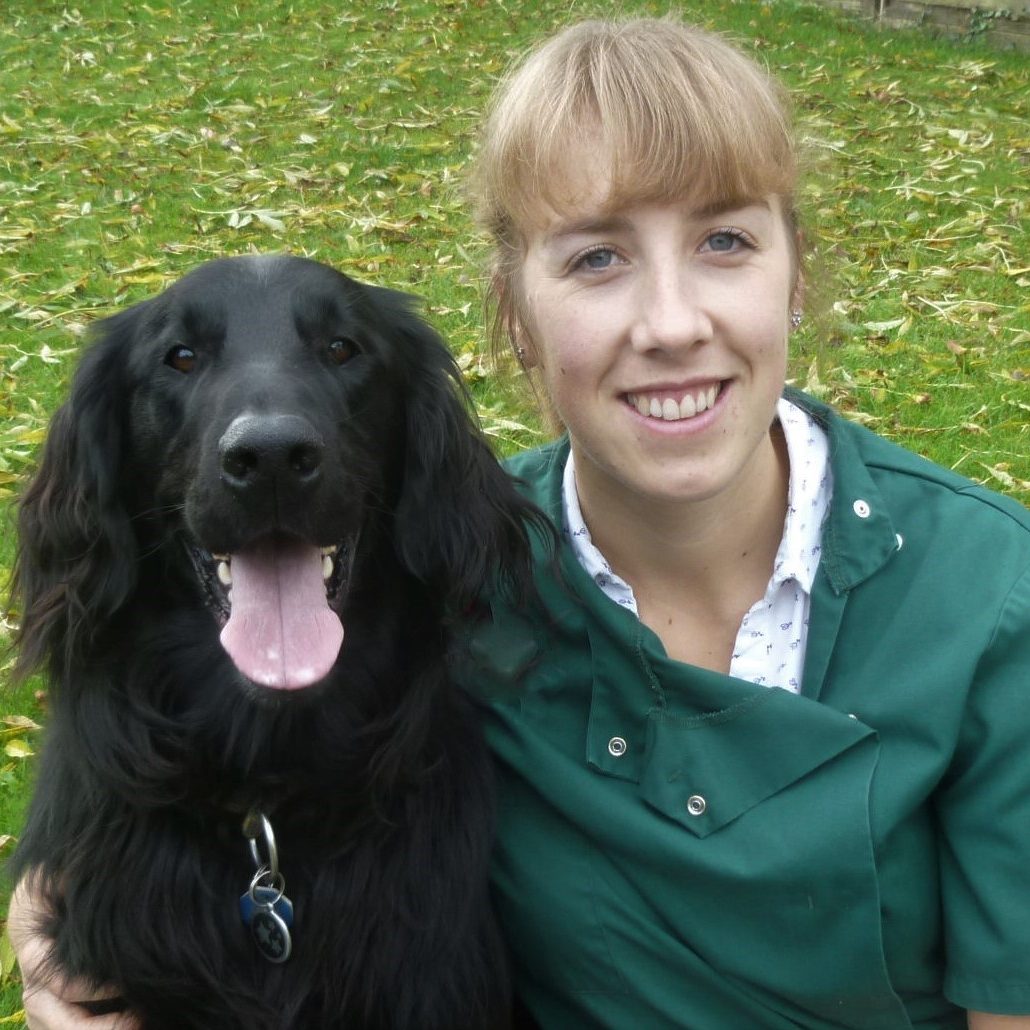
Rebecca is a vet surgeon who graduated from the Royal Veterinary College in 2009. She has a wealth of experience in first opinion small animal practice, having done a mixture of day-to-day routine work, on-call emergency duties and managerial roles over the years. She enjoys medicine in particular and she is proud to have recently achieved a BSAVA postgraduate certificate in small animal medicine (with commendation). She writes on various feline and canine topics, including behavior, nutrition, and health. Outside of work and writing she enjoys walking her own dog, spending time with her young family and baking!

Kathryn is a freelance writer who has been a member of the PetsRadar family since it launched in 2020. Highly experienced in her field, she's driven by a desire to provide pet parents with accurate, timely, and informative content that enables them to provide their fur friends with everything they need to thrive. Kathryn works closely with vets and trainers to ensure all articles offer the most up-to-date information across a range of pet-related fields, from insights into health and behavior issues to tips on products and training. When she’s not busy crafting the perfect sentence for her features, buying guides and news pieces, she can be found hanging out with her family (which includes one super sassy cat), drinking copious amounts of Jasmine tea and reading all the books.

